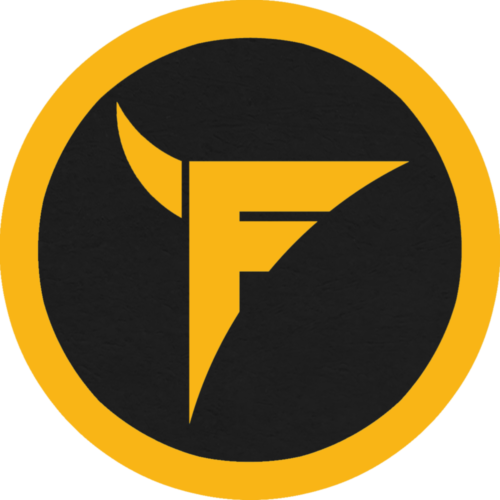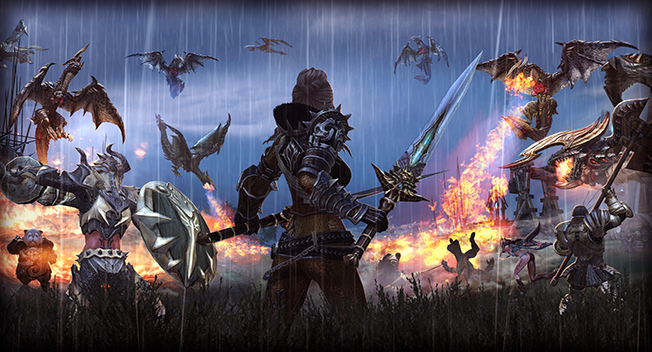Online games have shifted in the past few years from an interface based combat design to a more action oriented one. As a result, the core dynamics of group gameplay have had to be largely changed as well as enemy artificial intelligence has had to be improved in order to not become a pushover in more dynamic fights.
MMORPGs (Massively Multiplayer Online Role Playing Games) have always had extreme amounts of information available to them compared to nearly any other genre, and have attempted to provide this to the players as best as each individual game can. Everything from what your character can do (or can’t do), to what equipment it can wear, what the enemy does, what your allies are doing, even what the non-player character nearby may be talking about. The more complex the systems became without simplifying how it was presented, the more you’d find yourself playing the interface and not necessarily the game.
Naturally as time went on, ways were devised to simplify the communication of needed game information, and reduce the amount of interface tunneling needed to enjoy the game. The way combat was designed in these games benefitted more playing of the interface than what we’re currently now facing in 2014, so that logically seemed to be the next area of improvement.
Cue the introduction of Action Combat to online RPGs. One of the main examples of this is TERA Online, developed by Bluehole Studios in Korea and localized/published in North America by En Masse Entertainment. It released mid-2012 and presented gamers with the most robust Action Combat system in an online game of its type we’d yet seen at that point. Granted, it had some flaws in other areas, but as far as the actual fighting was concerned it was fresh, new, and more importantly well executed.
Following suit we soon saw more and more Action Combat games being released of varying quality, with the next high profile release being Guild Wars 2 with its somewhat hybrid between interface based (colloquially known as Tab Target) and action based combat. Unlike TERA, Guild Wars 2 became a huge success in the west, but that’s down to the sum of its parts that were largely more favourable in comparison. Nonetheless, this reinforced the appeal of such real time gameplay and has further helped pave the way for the way combat will be from here on out.
Looking at the games being released this year in the West, only one out of four has Tab Target combat. ArcheAge, a Korean game developed by XL and soon to be published in North America and Europe by Trion Worlds. The other three – Wildstar, Everquest Next and The Elder Scrolls Online, all have either a hybrid (though largely action) or full action as their method of combat interaction. Speaking of games coming out in the East, a lot more lean towards action though Tab Target isn’t as out of favour there as it is here.
If enemies still fought and attacked us in Action Combat games as they did in Tab Target, they would be unbelievably easy foes. Difficulty is being ramped up, and in turn, enemy artificial intelligence is being improved and becoming more dynamic and spontaneous. More movement is required in order to stay alive, and damage intake is increased to artificially increase the difficulty along with improved combat strategies from both foes and allies alike.
Group content suffers slightly from this, though to the extent at which it does depends on the game and how it handled the implementation of combat. In some games, there is no dedicated Tank class (designed to keep enemy attention on them) or Healer class (designed to heal up any damage incurred by the group), meaning everyone can deal damage in various ways to make up for it. Because of this, more rests on player skill, and can become an artificial barrier for those who aren’t able to (for many reasons) or cannot because of hardware/network issues.
Subsequently playing games with such fast paced combat (though that’s not to say that Tab Target games have slow combat, Aion being an example) leave little time to do anything other than fight furiously. Typing using the game’s chat system becomes laborious and potentially deadly, and focus slipping can have a much greater combat effect and even swing it out of your favour.
Games with Tank and Healer classes as well as Action Combat (such as TERA) utilize more of a First Person Shooter-esque reticule mode of targeting for healing, and directional based attacks for tanking, as well as an active block mechanic. Active Block means to have an ability you can use on command (sometimes with its own separate resource meter) in order to block damage you’ll inevitably take as the front of the group. This invites more creative fights based on the traditional trinity of Tank, Healer and Damage.
Final Fantasy XIV: A Realm Reborn has more traditional Tab Target combat, but with the added element of movement and directional attacks generally found in Action Combat games to help spice it up. It’s helped out, as even when killing things alone you can avoid logical damage and help increase immersion in that regard.
It’s not clear which method will ultimately win out in the end, as the execution is more important than anything else, but seeing the potential of a fast paced near-hybrid combat system in Blade & Soul has shown the possibility of what it could become.

